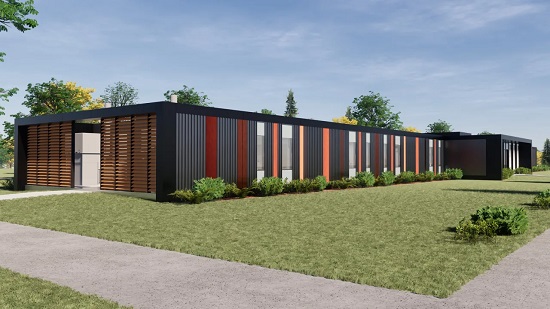 Thursday, April 25, 2024
Thursday, April 25, 2024  Thursday, April 25, 2024
Thursday, April 25, 2024 
In a parking lot next to a hospital in an Atlanta suburb, dozens of modular critical care units—made in a factory and delivered by truck—are being installed to help add space as COVID-19 cases continue to grow.
The prefab system, called STAAT Mod (Strategic, Temporary, Acuity-Adaptable Treatment), has the same complex features as standard hospital rooms. But while traditional construction of an intensive care unit might take 12 to 24 months, this can be put in place in just a few weeks. “This goes together like a series of Legos or an erector set,” says Kurt Spiering, principal and healthcare market sector leader at HGA, the architecture firm behind the design. “That was really the challenge: How would you create something that’s repeatable and modular, but something that has infinite variations, so it could be adapted and assembled in any different arrangement?”
In March, as coronavirus lockdowns were beginning in the U.S., a construction firm called the Boldt Company reached out to HGA—which designs hospitals—and suggested partnering on prefab modules. The need kept getting clearer. “We started seeing tents go up,” says Kate Mullaney, national healthcare market strategist at HGA. “Everyone saw New York City put tents in Central Park, and people were pretty horrified—’Oh, my God, is that where I’m going to end up?’ We also knew that just wasn’t the level of clinical quality that critically ill patients need.” Some others were trying to retrofit shipping containers, but those designs didn’t meet the standard that the Centers for Disease Control and Prevention was recommending for COVID-19 patients, called airborne infection isolation rooms.